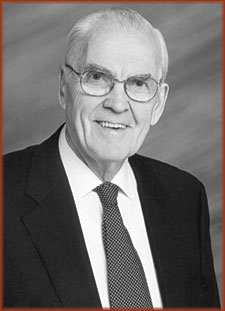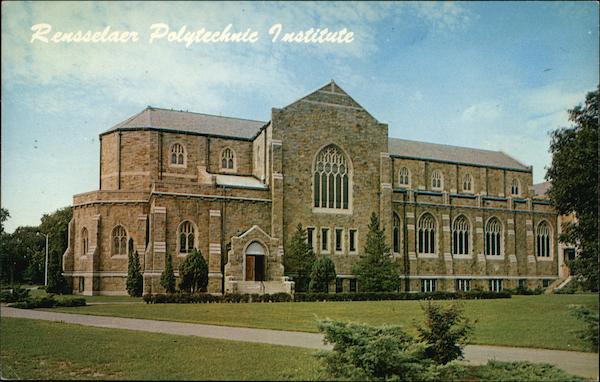Voorhees Computing Center (VCC): Difference between revisions
Mag schanz (talk | contribs) |
Mag schanz (talk | contribs) |
||
| Line 36: | Line 36: | ||
Alan M. Voorhees & Associates was founded in 1961, in which propelled major design city transportation systems, including places from Boston to Los Angeles. Voorhees by 1979 helped found Atlantic Southeast Airlines, which was later bought out by Delta Air Lines. Voorhees later on was honored with the establishment of the Voorhees Transportation Center at Rutgers University in 1998, as well as the founding of the Voorhees Computing Center (VCC) at Rensselaer Polytechnic Institute. | Alan M. Voorhees & Associates was founded in 1961, in which propelled major design city transportation systems, including places from Boston to Los Angeles. Voorhees by 1979 helped found Atlantic Southeast Airlines, which was later bought out by Delta Air Lines. Voorhees later on was honored with the establishment of the Voorhees Transportation Center at Rutgers University in 1998, as well as the founding of the Voorhees Computing Center (VCC) at Rensselaer Polytechnic Institute. | ||
| Line 47: | Line 45: | ||
Voorhees Computing Center (VCC) of RPI | Voorhees Computing Center (VCC) of RPI | ||
</div> | </div> | ||
Voorhees was also a passionate collector of historical maps, amassing an impressive collection of over 300 maps focused on the history of Virginia. He donated this collection to the Library of Congress and the Library of Virginia. Whilst supporting Virginia, Voorhees instilled the idea of the Civil War Maps Digital Image Project which would digitize and include these maps in the Libraries database! Alan, and his wife Natalie Voorhees, received the 2000 Philanthropic Award from the Library of Virginia Foundation! | |||
=Appearance= | =Appearance= | ||
Revision as of 01:57, 1 November 2024
Introduction
The Voorhees Computing Center at Rensselaer Polytechnic Institute is named after donor Alan M. Voorhees, a graduate of RPI in the Class of 1947 [1]. He donated $3.4 million to his alma mater in 1979 to transform an on-campus chapel into a modernized computing center. The VCC is still operational today, and has transformed over the years to remain modern to technologies of the time.
Who was Alan M. Voorhees?
Alan Manners Voorhees was born December 17th, 1922 and died December 18th, 2005 in Highland Park, New Jersey. He was a groundbreaking American transportation engineer!

Alan M. Voorhees
Voorhees Connection to Rensselaer Polytechnic Institute
He originally came to Rensselaer Polytechnic Institute (RPI) to study engineering, alongside his step-brother Fred Voorhees. Alan Voorhees was a part of RPI's Reserve Officer Training Corps, as well as on the football team. But, his time was cut short and Voorhees left to enlist in the United States Navy during World War II (WW2). During the war, he was part of "Underwater Demolition Team 11" (UDT-11), "Frogmen", which can be understood as an early form on the Navy SEALs. See picture below. He spent his time mapping shoreline defenses in the Pacific, and walked away with a Silver and Brown Star, as well as the Presidential Unit Citation. He returned to RPI to graduate with in 1947 in Civil Engineering, and then went on to get his masters degree in city planning from the Massachusetts Institute of Technology (MIT) in 1949.

An example of WW2 US Navy Frogmen
The Automobile Safety Foundation
The Automobile Safety Foundation was a nonprofit organization run out of Washington D.C. in the 1950s. There, Voorhees helped develop a mathematical formula to predict traffic patterns based on the usage of lanes. Voorhees later on published his paper "A General Theory of Traffic Movement” in 1956, which revolutionized travel forecasting by developing a gravity model to predict the distribution of urban trips based on land use intensity.
Making a Lasting Impact
Alan M. Voorhees & Associates was founded in 1961, in which propelled major design city transportation systems, including places from Boston to Los Angeles. Voorhees by 1979 helped found Atlantic Southeast Airlines, which was later bought out by Delta Air Lines. Voorhees later on was honored with the establishment of the Voorhees Transportation Center at Rutgers University in 1998, as well as the founding of the Voorhees Computing Center (VCC) at Rensselaer Polytechnic Institute.

Voorhees Computing Center (VCC) of RPI
Voorhees was also a passionate collector of historical maps, amassing an impressive collection of over 300 maps focused on the history of Virginia. He donated this collection to the Library of Congress and the Library of Virginia. Whilst supporting Virginia, Voorhees instilled the idea of the Civil War Maps Digital Image Project which would digitize and include these maps in the Libraries database! Alan, and his wife Natalie Voorhees, received the 2000 Philanthropic Award from the Library of Virginia Foundation!
Appearance
The chapel was built for the Sisters of St. Joseph in 1933 as an addition to the main building used on Rensselaer's campus, and its design is likely a reminder of the Sisters' history. Six ordinary women started the Sisters' organization in 1650 in southern France, where they continued practicing for nearly two hundred years before coming to America in 1836 [2]. Their province in Troy, NY, was assigned in 1860, and their very own chapel was built in 1933 near RPI's grounds. Its gothic architecture may be a homage to their roots in Le Puy, France, as the VCC appears similar to many buildings and cathedrals in the Sisters' hometown. Regarding the VCC itself, the exterior structure is composed of Weymouth granite and contains composition granite trim and piers [1]. Inside the building lies stained-glass windows, painted murals, and marble statuary and altars.
History
The gothic-inspired building was first erected for the Sisters of St. Joseph in 1933 as a chapel [1]. They used it until 1958, when Rensselaer acquired the building and started renovations to adjoin a functioning library to the chapel. These renovations were completed in 1960, and the library operated in that location for another sixteen years. In 1976, the library was relocated to the Folsom Library, yet the chapel remained. Just three years later in 1979, the chapel was transformed into the Voorhees Computing Center (VCC), which still functions today as "the most unique computing center in the world" (former RPI President George Low). In 1980, the building received the Troy Chamber of Commerce Beautification Award to recognize the architectural design of Wallace, Floyd, Ellenzweig, Moore, Inc. in its recent transformation from chapel to technological hub [3].
Current Status
The Voorhees Computing Center is still active today. It serves as a help center for students having trouble with their devices run by the Information Services and Technology division of the CIO on RPI's campus [4]. It is also a hub for student-accessible printers and is often used as a place to study.
References
[1] “Chapel / Voorhees Computing Center.” Institute Archives and Special Collections. Rensselaer Polytechnic Institute. Accessed February 3, 2023. https://archives.rpi.edu/institute-history/building-histories/chapel-voorhees-computing-center.
[2] “Our History.” Sisters of St. Joseph of Carondelet, November 15, 2021. https://csjcarondelet.org/about/history/.
[4] “Help Desk.” Information Services and Technology. Rensselaer Polytechnic Institute. Accessed February 3, 2023. https://dotcio.rpi.edu/services/support-and-training/help-desk.
[5] https://www.washingtonpost.com/wp-dyn/content/article/2005/12/23/AR2005122301694.html https://www.nytimes.com/2006/01/01/us/alan-m-voorhees-is-dead-at-83-designed-transportation-systems.html